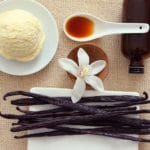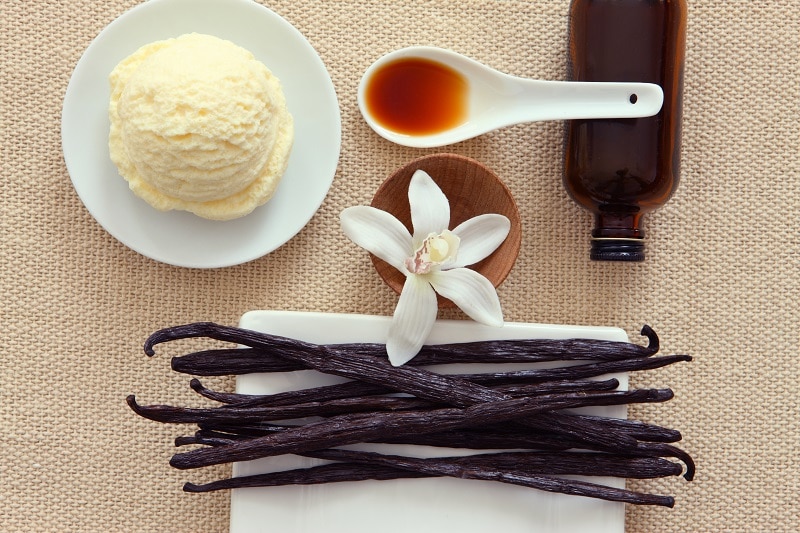
Have you ever wondered why there are so many types of vanilla for baking, and which one is best for your recipes? What are the flavor differences? Embark on a sensory voyage through the fragrant orchards of vanilla diversity. Unveil the tapestry of flavors that Madagascar’s Bourbon vanilla weaves, or dance with Tahiti’s floral and aromatic essence. We’re talking Vanilla Extract, Bean Paste, Powder, and Sugar, empowering you to craft culinary masterpieces.
Types of Vanilla and Origins
Vanilla comes from the orchid plant, specifically the Vanilla planifolia species. The plant is native to Mexico and Central America, where it has been cultivated for centuries. The vanilla orchid produces long, green pods that are harvested and cured to create the familiar vanilla flavor and aroma. The labor-intensive process of hand-pollinating the flowers and curing the pods is what makes vanilla one of the most expensive spices in the world. Today, vanilla is also grown in other tropical regions such as Madagascar, Tahiti, and Indonesia.
What Is Vanilla Bean Paste?
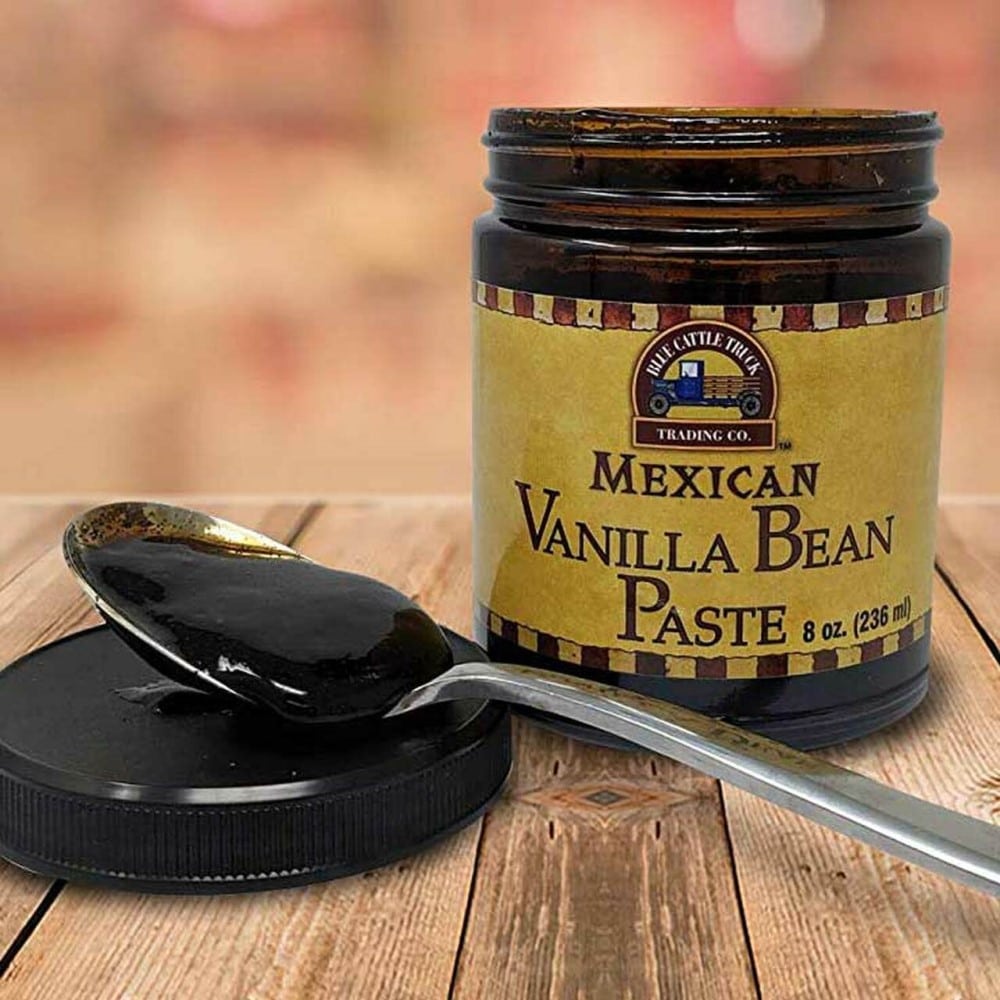
Vanilla bean paste, a thick and concentrated form of vanilla, offers a convenient way to add the intense flavor and visual appeal of vanilla bean specks to various recipes. Made by combining vanilla extract with vanilla bean powder, this paste provides a potent vanilla flavor with the added bonus of those coveted vanilla bean specks for an authentic touch. Its thick consistency makes it easy to measure and incorporate into batters, doughs, and frostings without the need to scrape vanilla beans.
Vanilla bean paste is ideal for recipes where you want a strong vanilla taste combined with the aesthetic appeal of seeing those tiny black dots throughout your dishes. Vanilla paste is best for when you want to vanilla flavor to really be the star of the show.
What Is Vanilla Extract?
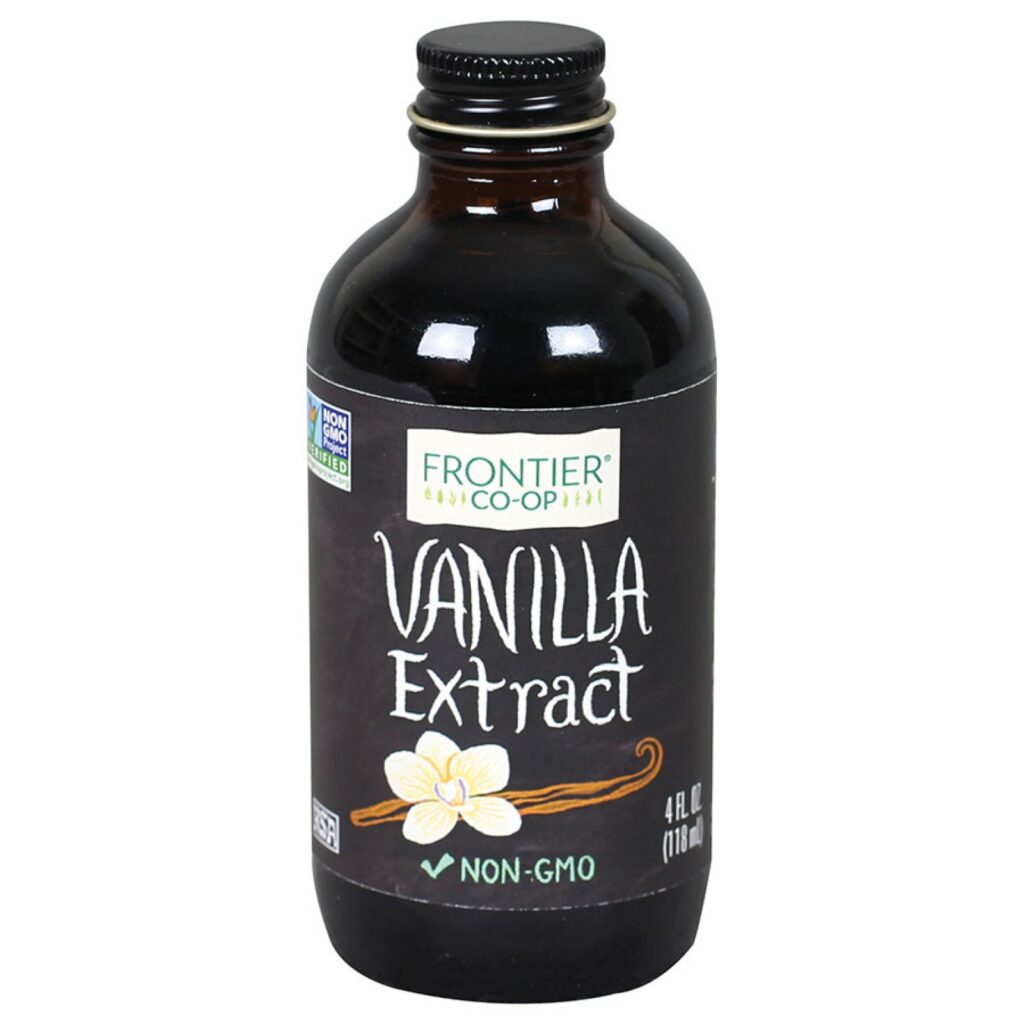
The vanilla extract is a versatile and commonly used form of vanilla in baking and cooking. Derived from the vanilla bean, this concentrated liquid carries the rich and aromatic flavor of vanilla. There are different types of vanilla extracts available, including pure vanilla extract, which is made solely from vanilla beans, and imitation vanilla extract, which is a synthetic version. Pure vanilla extract is preferred for its authentic flavor profile, while imitation vanilla extract provides a more affordable option.
When using vanilla extract in recipes, it is essential to consider the type of vanilla extract and its intensity to achieve the desired taste. Experimenting with different types of vanilla extracts can elevate the flavors in your culinary creations. Extract is best for when you want vanilla flavor, but you don’t want it to come through as strongly as it would if you used paste.
Vanilla Powder
A common choice for bakers and chefs alike, vanilla powder is a versatile ingredient that provides a concentrated burst of vanilla flavor in a powdered form. Vanilla powder is made by drying and grinding vanilla beans into a fine powder, preserving the rich aroma and taste of vanilla. Here are some key points about vanilla powder:
- Easy to Use: Vanilla powder can be easily measured and added to dry ingredients without affecting the texture of the recipe.
- Long Shelf Life: Vanilla powder has a longer shelf life compared to vanilla extract, making it a convenient pantry staple.
- Intense Flavor: The powder offers a strong vanilla flavor, making it ideal for recipes where a potent taste is desired.
- Versatile: Vanilla powder is perfect for flavoring baked goods, desserts, and beverages.
Vanilla Sugar
With its sweet infusion of vanilla essence, vanilla sugar enhances the flavor profile of various culinary creations. Vanilla sugar is a delightful ingredient that can elevate a wide range of dishes, from baked goods like cookies, cakes, and muffins to beverages such as coffee, tea, and cocktails. This specialty sugar is made by blending granulated sugar with vanilla beans or vanilla extract, allowing the aroma and taste of vanilla to permeate every grain. Its versatility makes it a must-have in any baker’s pantry, adding a subtle yet distinctive sweetness that sets dishes apart. Whether sprinkled on top of desserts or incorporated into recipes, vanilla sugar brings a touch of luxury and warmth to your kitchen creations.
Frequently Asked Questions
Can Vanilla Extract Be Used Interchangeably With Vanilla Bean Paste in Recipes?
Certainly! Vanilla extract and vanilla bean paste can generally be used interchangeably in recipes. Both offer a rich vanilla flavor, but the paste provides the added texture of vanilla bean seeds. Adjust quantities slightly for optimal results in your culinary creations.
How Can Vanilla Powder Be Substituted for Vanilla Extract in Baking?
When substituting vanilla powder for vanilla extract in baking, adjust the quantity based on the concentration. Begin by using half the amount of powder for the required extract, then adjust to taste. Vanilla powder offers a rich and intense flavor to enhance baked goods.
How Do I Decide Which Vanilla Product is Right for my Recipe Flavor?
When considering flavoring options in baking, understanding the nuances of vanilla powder and extract can elevate your creations. From depth of flavor to texture impact, selecting the right form can enhance your baked goods significantly.
Are There Any Special Storage Requirements for Vanilla Sugar to Maintain Its Flavor?
To maintain the flavor of vanilla sugar, store it in an airtight container in a cool, dark place away from heat and moisture. Proper storage helps preserve the aromatic qualities of vanilla sugar, ensuring its freshness and potency.
High-Quality Ingredients For Your Kitchen Needs
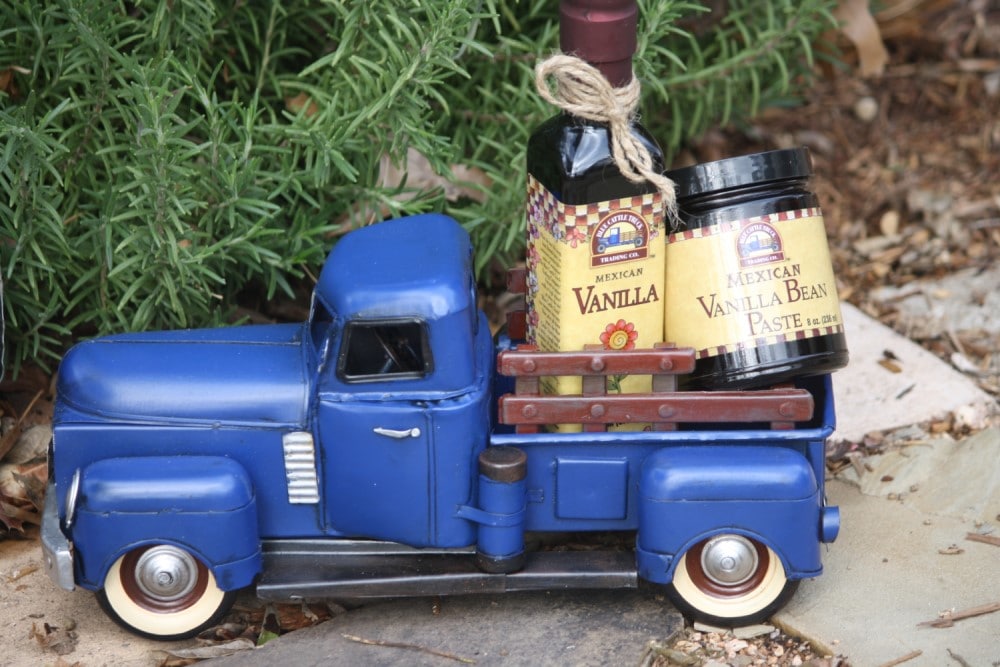
Here at Kitchen Kneads, all of our products are high-quality, not just the more expensive ones. We sell both extract and paste, as well as all sorts of other ingredients for your cooking ventures. We also offer cooking classes, if you’d like to hone your skills in the kitchen, regardless of whether you’re a beginner or expert. Take a browse around our site and contact us if you have any questions about our products or cooking classes.



